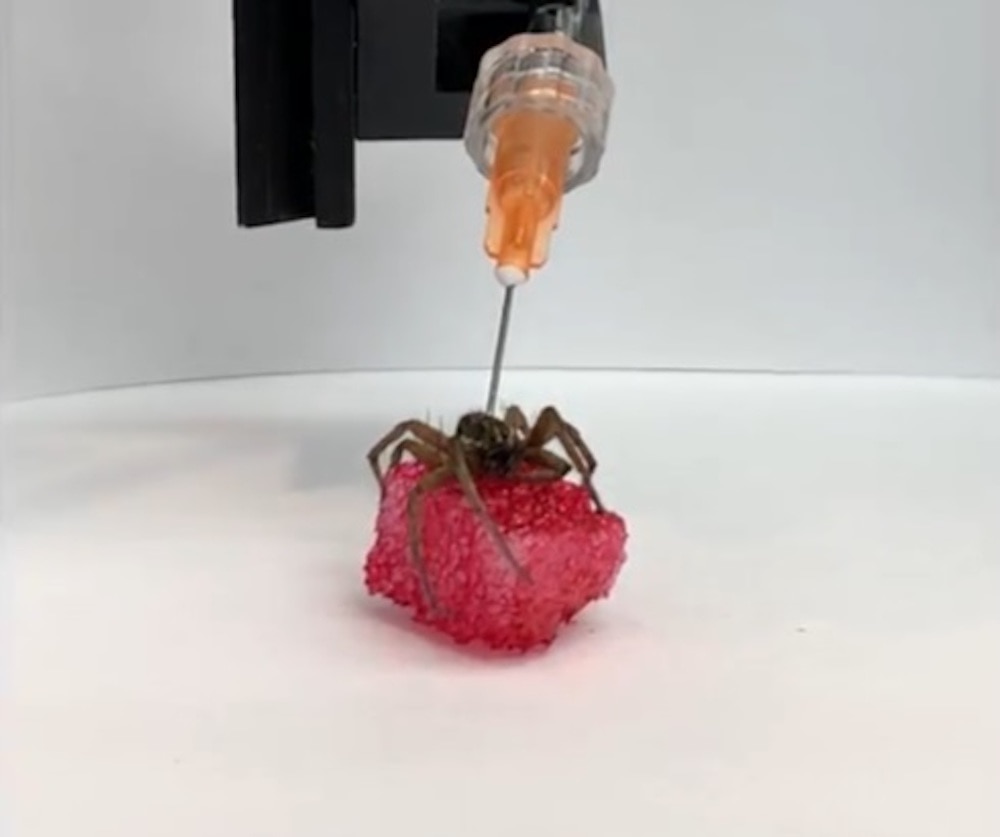Create a free profile to get unlimited access to exclusive videos, sweepstakes, and more!
Necrobotics: How scientists are using dead spiders as corpse claw machines
The robot wars are about to get a lot more interesting.

Have you ever found yourself transported back to the Middle Ages, without your trusty shotgun and chainsaw hand, and forced to combat the forces of evil and their Army of Darkness? No? Count yourself lucky. For the most part, when things die, they stay dead. They don’t, for instance, swoop down from above to snag you in their reanimated claws, but all that is about to change as the world of the small is invaded by mechanically reanimated spider corpses.
Daniel Preston is an assistant professor at Rice University where he leads the Preston Innovation Lab. Te Faye Yap is a graduate student in that lab and lead author of a new paper published in the journal Advanced Science exploring the possibility of using inanimate — read: dead — spiders as a form of robotic grippers.
The project started when the team was moving into a new lab space and noticed a dead spider off in the corner. The legs were all curled up and they got to wondering why spiders do that when they die. It turns out that spiders don’t have antagonistic muscle pairs, which essentially means their limbs only move in one direction unless another force is applied to them. By contrast, human limbs have paired muscle groups. The arms, for instance, have biceps and triceps which work together to curl or extend the limb. Using this analogy, it’s as if spiders only have biceps, so when they die their arms curl up. When living, they overcome this one-way muscle by introducing hydraulic pressure to the limb. Researchers wondered how they might exploit that relationship to use the spider’s body once it’s done with it.
“One of the key benefits here is that nature has already done the design and fabrication work for us. We can source this material, the inanimate spider, and then interface with the hydraulic system of the spider in order to directly use that as a robotic gripper,” Preston told SYFY WIRE.
Getting the spiders to extend their legs was a simple matter of finding a way to introduce a new source of pressure to the body.
"The spider extends its legs when its alive using hydraulics. When a spider dies, it loses active control of the pressure. We’re externally introducing the pressure to move the legs,” Yap said.
Researchers accomplished this by introducing a needle to the hydraulic chamber and securing it in place with a small amount of adhesive. The other end of the needle was attached to a test rig or a handheld syringe and a small amount of air could be pushed into the body, causing the legs to extend. The result was a ready-made robotic gripper not unlike those used in toy claw machines. The major difference being this one had eight claws instead of three and was made of dead spider instead of metal.
“There are other systems out there that are bioinspired. They look to nature to gain inspiration and incorporate some physical characteristics from plants or animals. In our case, we used the biotic material itself as the gripper,” Yap said.
Aside from being equal parts creepy and cool, the team envisions some real-world applications for their necrobots. Invertebrates are well known for their ability to hoist loads in excess of their own body weight without breaking a sweat (of course, spiders don’t sweat even when they’re not dead, but that’s beside the point). The team found a relationship between the size of the spider and the relative weight it was able to carry. Interestingly, the smaller the spider the greater the weight it could carry, relative to its own body size. That’s due to some interesting relationships regarding muscle architecture. That means that a thousand small spiders would be better at lifting a heavy load than one giant spider a thousand times their size. Army of darkness, indeed.
“We’re looking forward to using these for obtaining live specimens in field studies because the architecture of this necrobotic gripper offers some intrinsic compliance due to the fluidic actuation that can preserve or protect fragile or even living specimens obtained in the field,” Preston said.
In short, nature has already created the perfect bug grabbing machine in the spider. Scientists have only found a way to use them after they’re dead. At present, the team is activating all eight of the spider’s legs in tandem but future research is geared toward figuring out how to move each leg independently. They’re also investigating ways to extend the necrobot’s second life by staving off dehydration and decomposition.
“We did cyclic testing for about a thousand cycles and noticed they start degrading at about 700 cycles. This could be due to dehydration of the exoskeleton that causes the joints to become more brittle. As a preliminary study, we applied a thin layer of coating to see if that prevents moisture loss. We’ll be studying different types of coating materials in the future,” Yap said.
No word yet on whether or not they’ll be replacing any lost spider limbs with tiny chainsaws.



























